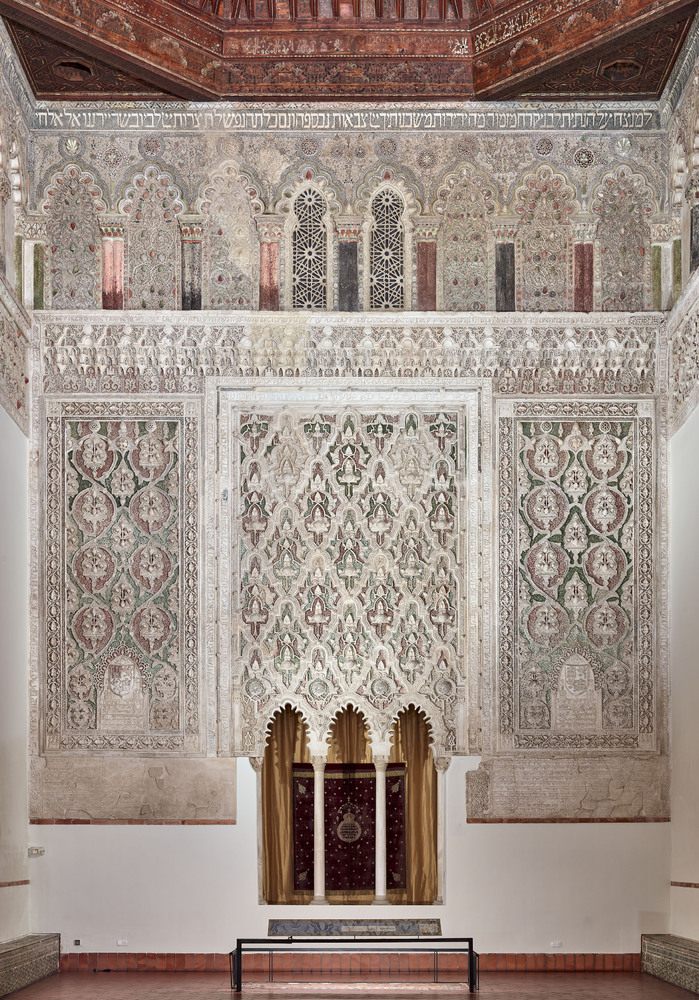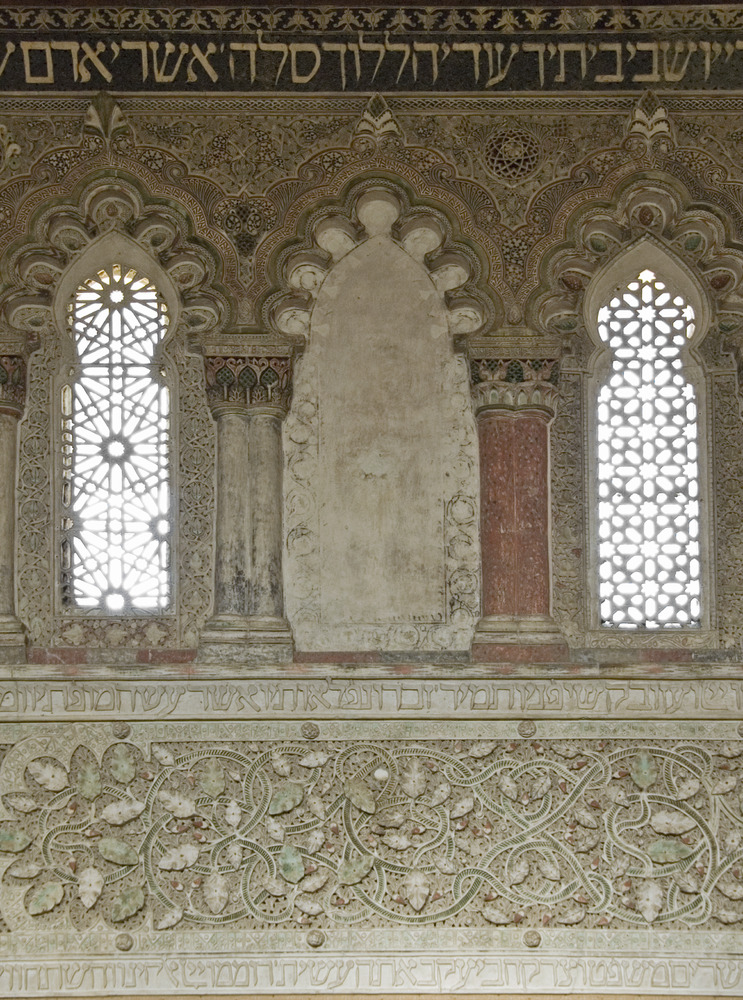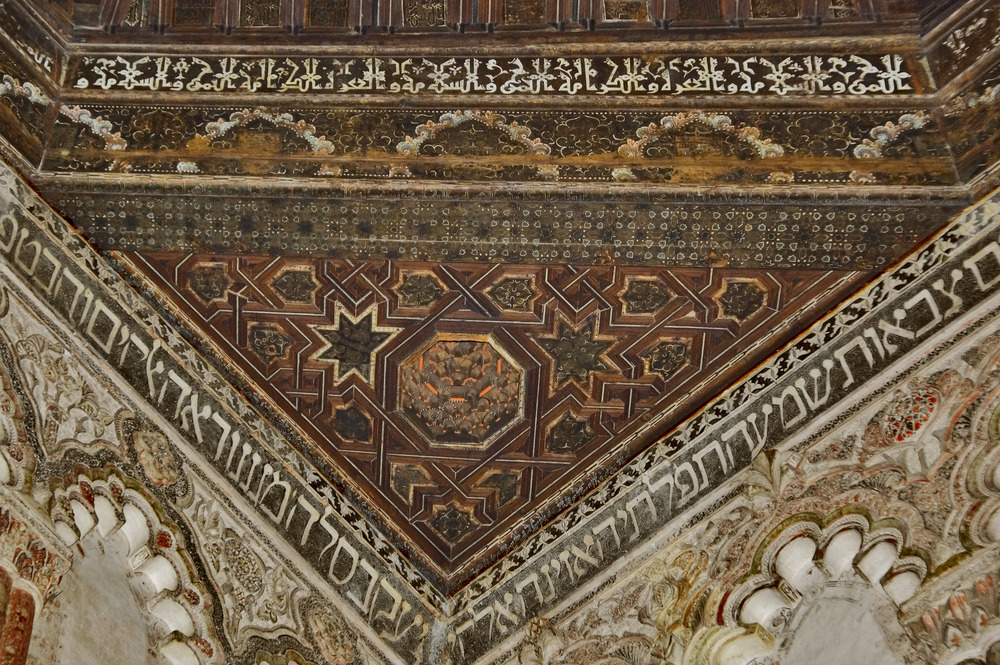Sephardic Museum in Toledo: Mudéjar style as a symbol of coexistence of cultures
The Jewish museum in Toledo illustrates the emphasis on intercultural exchange and dialogue of Jewish museums in its architecture. The building, the Synagogue del Tránsito, is a beautiful example of mudéjar style. This style is a great example of multicultural exchange in medieval Catholic Spain.
The style and history of this synagogue is a great example of intercultural influences. It was based on the application of traditional Islamic elements to non-Muslim, usually Christian, architecture. Its main feature are plaster ornaments that cover the walls so that they evoke woven fabrics, wooden roofing and Moorish arches. The ornamentation includes geometric and vegetal forms and calligraphy. In Toledo these elements have been applied to a Jewish synagogue, with open prayer space, a women’s gallery and Torah Ark. The inscriptions are mostly written in Hebrew and also in Arabic. Jews who for ages were living under the Muslims and later came to live in Christian kingdoms, played a significant role in transmitting some elements of Muslim art, literature and cuisine throughout Christian Spain and Europe.
Context - Coexistence:
Jewish museums as reminders of the centuries of Jewish presence and coexistence within the local population Jewish museums in Europe express the need of European societies to come to terms with their difficult Jewish histories and to break the silence that surrounded the Holocaust. They present the perspective of a minority that for many ages has been present in European history and culture. In this way they remind us of the multiethnic past of some countries or regions. Their exhibitions present the Jewish history as a part of local history. They emphasise the coexistence that embraced periods of peaceful cooperation and mutual influences as well as conflicts and moments of crisis. They also show the special character of Jewish culture in a particular place. The narration of Jewish museums aims to open the visitors to the idea of cultural diversity and tolerance.
Title
content
Jews who for ages were living under the Muslims and later came to live in Christian kingdoms, played a significant role in transmitting some elements of Muslim art, literature and cuisine throughout Christian Spain and Europe.
Description
Context
Jewish museums in Europe express the need of European societies to come to terms with their difficult Jewish histories and to break the silence that surrounded the Holocaust. They present the perspective of a minority that for many ages has been present in European history and culture. In this way they remind us of the multiethnic past of some countries or regions. Their exhibitions present the Jewish history as a part of local history. They emphasise the coexistence that embraced periods of peaceful cooperation and mutual influences as well as conflicts and moments of crisis. They also show the special character of Jewish culture in a particular place. The narration of Jewish museums aims to open the visitors to the idea of cultural diversity and tolerance.



